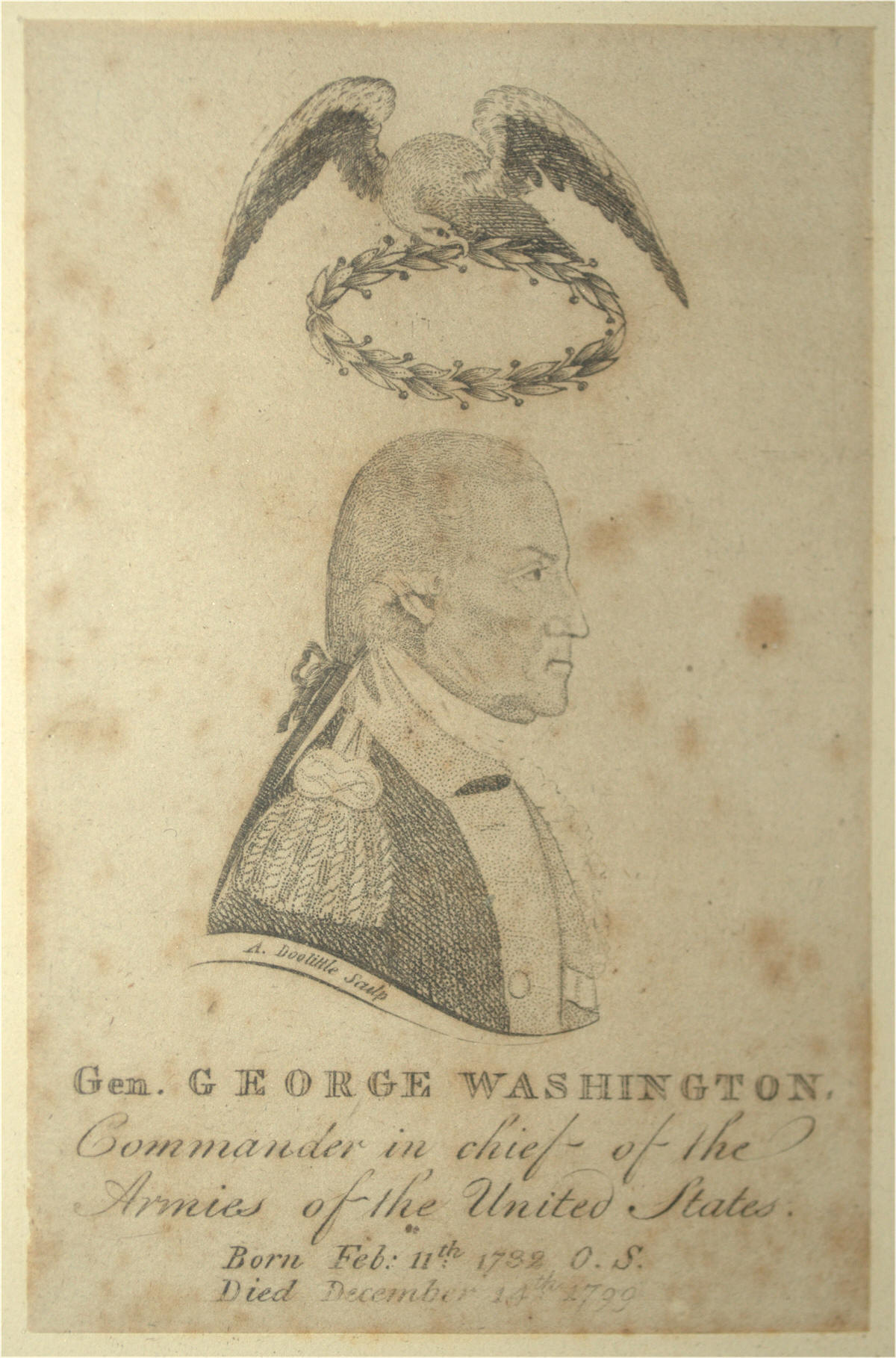|
 George
Washington is one of the most prolific American icons,
and graphic portraits of Washington have been produced
by countless artists and engravers since his rise to
prominence in the early 1770s. Engravings of the
18th century that date to Washington's lifetime, or to
the immediate period of national mourning that followed
his death on December 14, 1799, are especially sought
after and are generally considered rare, compared to
later engravings produced in great volume during the
more industrialized 19th century. Certain elements
contribute to the rarity of Washington portraits and
engravings. The earliest engravings of Washington,
especially those produced during the Revolutionary War
period from 1775 to 1783 when Washington served as
Commander in Chief, are very rare. Engravings
produced in America are also rare, compared to those
produced by more established European printmakers.
Those that are attributed to prominent artists such as
Charles Willson Peale or John Trumbull also stand out
among their peers. George
Washington is one of the most prolific American icons,
and graphic portraits of Washington have been produced
by countless artists and engravers since his rise to
prominence in the early 1770s. Engravings of the
18th century that date to Washington's lifetime, or to
the immediate period of national mourning that followed
his death on December 14, 1799, are especially sought
after and are generally considered rare, compared to
later engravings produced in great volume during the
more industrialized 19th century. Certain elements
contribute to the rarity of Washington portraits and
engravings. The earliest engravings of Washington,
especially those produced during the Revolutionary War
period from 1775 to 1783 when Washington served as
Commander in Chief, are very rare. Engravings
produced in America are also rare, compared to those
produced by more established European printmakers.
Those that are attributed to prominent artists such as
Charles Willson Peale or John Trumbull also stand out
among their peers.
This engraving was
produced by American engraver and self taught artist
Amos Doolittle (b. May 8, 1754, d. February 2, 1832).
Doolittle began engraving scenes of the American
Revolution, and his folio depicting the Battles of
Lexington and Concord are early American masterpieces.
Like his counterpart, Paul Revere, Doolittle was both a
skilled silversmith and engraver. Doolittle
engravings from the Colonial and Federal eras are very
scarce and collectible, owing in part to their folky,
somewhat primitive nature. Three of Doolittle's
best known works of national significance are the
Lexington and Concord folio produced in 1775; his
large-scale A Display of the United States of America,
released in several states between 1789 and the mid
1790's, and whose second state featured a left-facing
version of this same image of Washington surrounded by
linked chains containing the seals of the 13 original
colonies and the U.S. Great Seal; and this small
memorial image printed as the frontspiece to Benjamin
Trumbull's funeral elegy on the death of Washington,
entitled The Majesty and Mortality of Created Gods,
published in New Haven, Connecticut in 1800. The
likeness of Washington is based on Joseph Wright's 1790
profile engraving of then President Washington.
Despite the fact that Washington was now the civilian
commander in chief, rather than military commander in
chief, Wright's image and those subsequently derived
from it, such as Doolittle's engraving, show Washington
in his dress uniform. The portrait conveys a sense
of dignity and resoluteness, and was a favorite among
the public. Doolittle's 1800 version, with the
Federal Eagle and Laurel Wreath above Washington's head,
and the simple memorial inscription to "Gen. George
Washington, Commander in chief of the Armies of the
United States", was clearly intended to honor
Washington's military victories which brought liberty
and the birth of the nation.
Two important
catalogs of George Washington Engravings are The
Engraved Portraits of Washington published in 1880
by W. S. Baker, and Catalog of the Engraved Portraits
of Washington published by Charles Henry Hart in
1904. This engraving is listed as Baker 81,
classified as "Extremely Rare", and as Hart 145.
Searches for this engraving in the Smithsonian National
Portrait Gallery's Catalog of American Portraits yields
no results for the portrait. The book which
contained the print was produced both with and without
the portrait. Two copies of the book exist in the
Library of Congress' Jefferson Reading Room, and several
others are held in libraries around the country, but it
is not known how many still contain this important
engraving.
|

